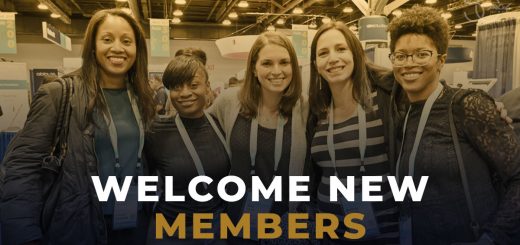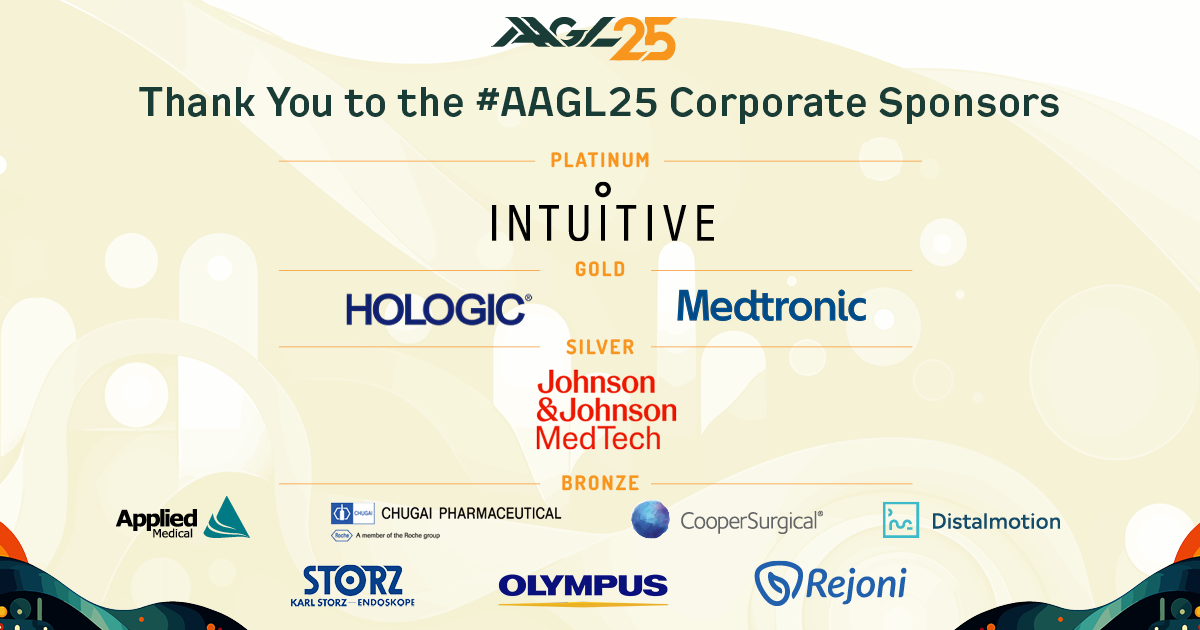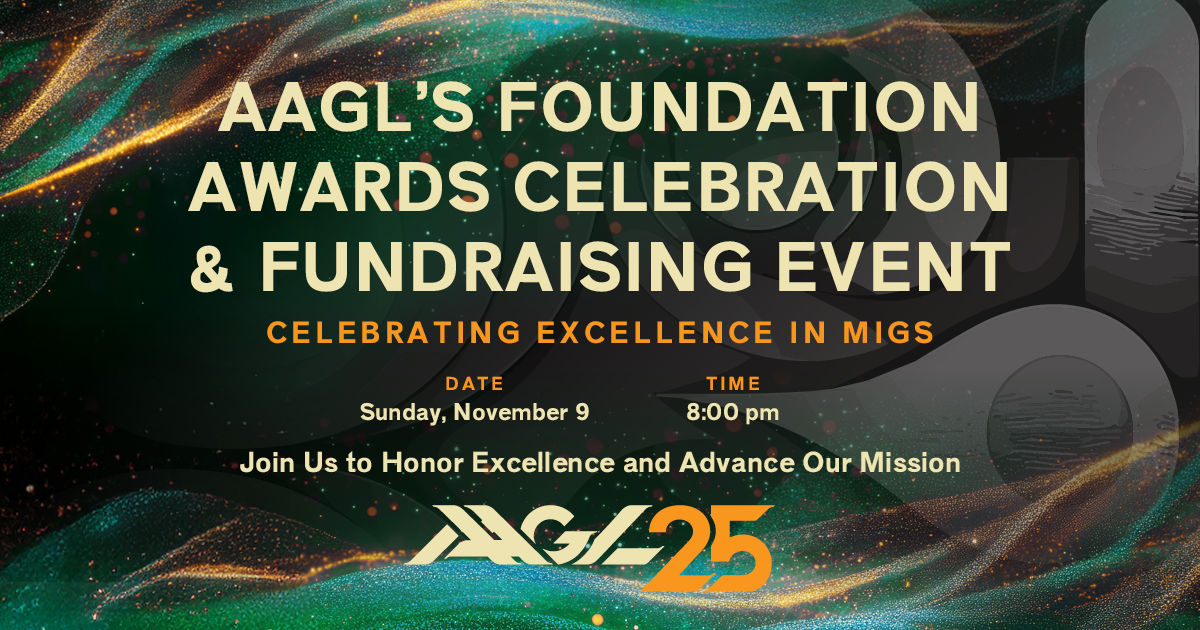Anniversary Article Series: 70’s Trailblazers
[vc_row][vc_column][vc_single_image image=”3055″ img_size=”full”][/vc_column][/vc_row][vc_row][vc_column][vc_column_text]To celebrate 50 years of the AAGL, we have requested historical accounts of each decade from AAGL members who were prominent leaders in those eras. The story of the AAGL will inspire you with the vision of its founding members, the perseverance needed to overcome challenges and the creativity and insight that shaped minimally invasive gynecologic surgery. We begin with a very special detailed overview of the founding of the AAGL and its first ten years, as told by the last living founding member and AAGL historian, Dr. Richard Soderstrom.
The 1970s: The Beginning
After observing Melvin Cohen perform laparoscopy in Chicago, Illinois during the late 1960s, Jordan M. Phillips performed this revolutionary operation in Downey, California. By 1971, he envisioned an independent organization for the education and training of laparoscopy. With his wife, Eleanor (“Ellie”), the organization was incorporated in 1972.
Using a search of the literature in the USA and Europe, he selected thirty physicians to speak about their experiences at the first AAGL meeting held at the Stardust Hotel of Las Vegas, Nevada in November 1972. The first meeting was called “Annual Symposium.” It was organized, managed, and funded by the Phillips. The original program had 23 speakers, 19 topics and 17 luncheon round table discussions regarding the state of the art of laparoscopy. The keynote speaker was Mr. Patrick Steptoe from England, the author of the only English language monograph on Laparoscopy. The luncheon speaker was Professor Hans Frangenheim of Konstanz, West Germany, a leader in laparoscopic creativity.
During the meeting, several reports of laparoscopic complications were presented. Richard Soderstrom and Julius Butler’s oral presentation later became the first published paper on Laparoscopic Complications in the USA. Cardiac arrhythmias from the use of CO2 insufflation prompted discussions about the merit of NO2 as an alternative. As the meeting progressed, Jaroslav Hulka, Stephen Corson, Philip Brooks and Soderstrom constructed a short questionnaire about attendee’s experience with laparoscopy and what types of complications had occurred. All thirty-eight participants completed this survey, and it was published in June 1973.
Dr. Phillips assembled the organizations first executive committee including Richard Soderstrom (Seattle, Washington), Louis Keith (Chicago, Illinois), Jacques Rioux (Quebec, Canada), Jaroslav Hulka (Chapel Hill, North Carolina), James Breen (Livingston, New Jersey) and James McClure (Irvine, California). One month later, the first three were able to join Dr. Phillips in New Orleans to set the stage for developing bylaws, organizational structure and plan the 1973 meeting. Without a membership, the positions of officer were assigned by mutual agreement. Jordan Phillips became President, Richard Soderstrom, Vice President; Jacques Rioux, Secretary; and Louis Keith, Treasurer.
Applications for membership were mailed and the response, like the attendance at the first meeting, was profound. The 1972 meeting in New Orleans focused on ways to introduce laparoscopy to one’s hospital.
In 1973, a “Flying Doctors” team was formed to aid in the education of physicians in developing countries. One of their first assignment was a trip to Beirut, Lebanon in April 1973. In mid-November, the American Association of Gynecological Laparoscopists (a name to be changed slightly later) held its first “International Congress of Gynecological Laparoscopy,” in New Orleans, Louisiana. An astounding 600 participants were exposed in the first day to the “Principles of Laparoscopy.” Dr. Rioux presented on a new electrical method called “Bipolar Cautery.” Dr. Hulka discussed his idea of a spring-loaded clip and Harrith Hasson introduced his invention: “Open Laparoscopy.” The occurrence of major injuries, unique to laparoscopy, led the AAGL into educational efforts in basic laparoscopy.
In 1974 the annual meeting flourished at the Disneyland Hotel with 18 sponsors from industry and 8 scientific exhibits. The first morning was dedicated to a series of movie films that were repeated by closed circuit television to each room in the hotel. The second day introduced the concept of basic and advance workshops in hysteroscopy, culdoscopy, photography and, for the first time, a program for nurses. The third day finished with a series of controversies in Laparoscopy which fostered the annual “Great Debates.”
In 1975, the annual meeting returned to Las Vegas, Nevada. It was here that the first pre-meeting postgraduate course, “Basic Laparoscopy,” was introduced. Lillian Yin from the FDA introduced the audience to what later became the Health Device Act. George Berci introduced the first small Endoscopic Television Camera. A presentation entitled “Meanwhile back in the courtroom,” explored the medical-legal experiences with laparoscopy. Due to the association’s wide national and international acceptance, it was clear to the Board, and its group of advisors, that a textbook on Laparoscopy was in order. The project launched by assigning chapters to prominent surgeons.
The 1976 annual meeting in Atlanta, Georgia, introduced microsurgical techniques in gynecology. An evaluation of the role of laparoscopy in oncology introduced a new area. When Congress passed the Health Device Act in May 1976, the FDA placed endoscopic devices in gynecology on a fast track towards developing guidelines for future approval of newly developed instruments. The safety and efficacy standards for gynecologic endoscopy were published in the Federal Register on February 26, 1980.
In 1977, Williams & Wilkins of Philadelphia published the textbook Laparoscopy, which included a color atlas. Though out of print today, it long stood as “the resource” on the basics in gynecologic laparoscopy. In this year, the annual meeting was held in San Francisco, California in December. As an international meeting, presentations from abroad were abundant and diversified. The ever-popular Complications Symposium focused on the need to have a better understanding of electrosurgical physics and their nuances. Later in the year, a successful publication, Microsurgery in Gynecology, was completed.
In 1978, there were three postgraduate programs held during the year and the annual meeting was conducted in Hollywood, Florida. Microsurgery, infertility, and sterilizations carried most of the program’s content. Authors were encouraged to contribute to the next in-house publication, Endoscopy in Gynecology. Patrick Steptoe and Professor Robert Edwards’ advances in embryo transplantation led to their success in the conception and delivery of Louise Brown.
In 1979, a group of AAGL faculty, led by Jordan Phillips, traveling to China where they performed the first laparoscopic procedure in that country. The annual meeting returned to the home of its initial success, Las Vegas, Nevada. At this meeting, Marcus Filshie presented his new clip for female sterilization.
Within the span of this decade, the extraordinary trailblazers who became the American Association of the AAGL were directly responsible for developments in laparoscopy, defining best practices, training other surgeons, and empowering the advancement of minimally invasive gynecologic surgery worldwide.
Over the course of this our 50th “Golden” Anniversary, we hope you enjoy this look at AAGL over the decades, in this NewsScope article series. [/vc_column_text][/vc_column][/vc_row]







